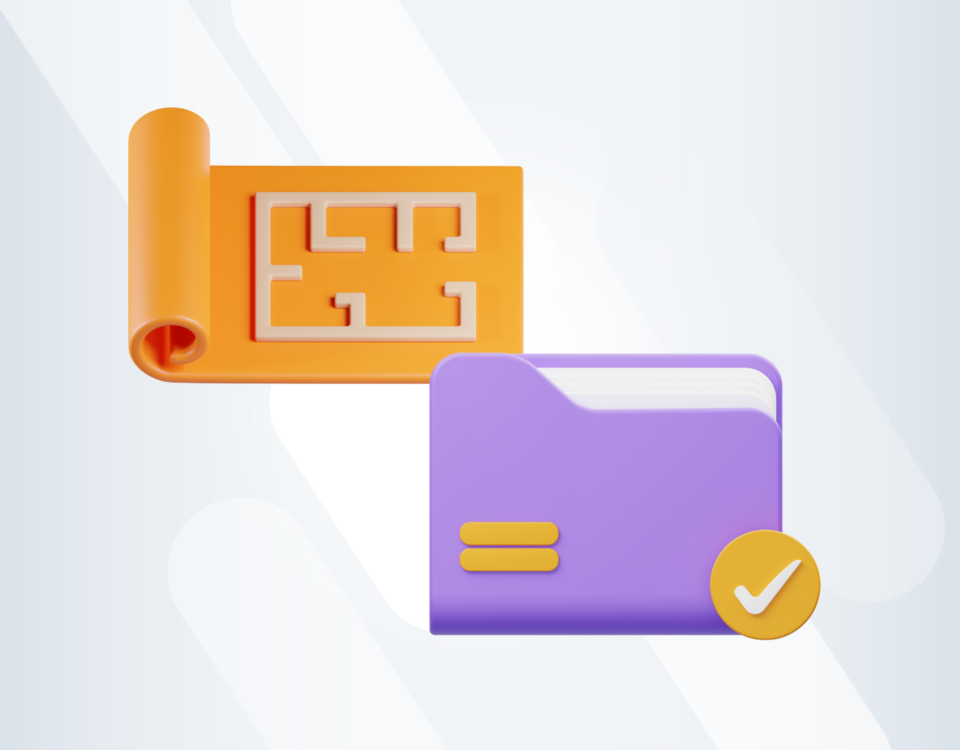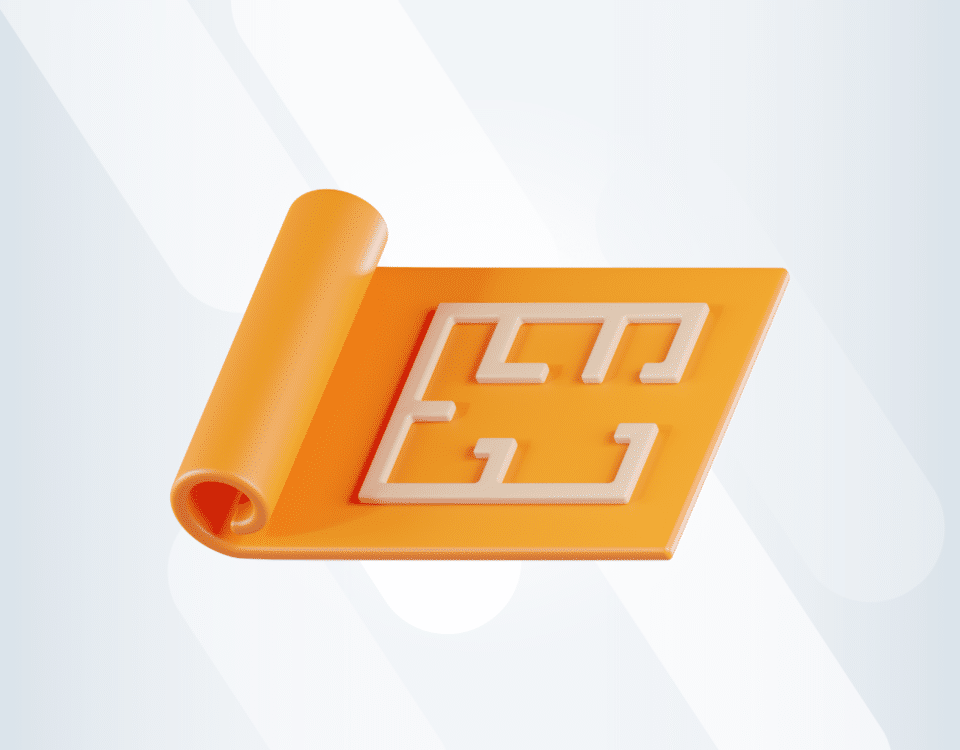Construction Tips, News & Best Practices
How Digital Transformation Drives Sustainability in Construction
Digital transformation and sustainability are probably the two biggest trends in the construction industry today. We often discuss both of them separately, but is there any connection between them? Can digital tools help your business become more sustainable? Let’s see how digital transformation can drive sustainability in construction!
Digital transformation and sustainability are probably the two biggest topics in the construction industry. I bet that there is a 95% chance that you would find them on any list of the top most important industry trends you can find on the internet.
One thing that makes them both so important, something that they share is, well, the future. There is no path forward for construction other than through digitalisation and becoming more sustainable by both delivering sustainable buildings and infrastructure, and by achieving a more balanced and environmentally-friendly building process.
So both digital transformation and sustainability should be crucial in your business strategy for the foreseeable future. But is there a way to kill two birds with one stone?
Let’s discuss how digitalisation drives sustainability in construction!
What Does Sustainable Construction Mean?
We keep going on and on about sustainability and one can get confused about its actual meaning. Is it about being eco? Is it about climate change? Or maybe, it just became yet another buzzword that people like to throw around? Let’s clear this up.
One of the best definitions of sustainability comes from 1983, by the UN World Commission on Environment and Development:
Sustainability means meeting our own needs without compromising the ability of future generations to meet their own needs.
"I think it explains the idea best. We have to remember the consequences of our actions and we must make sure that what we do today will ensure a good or, at least, not fatal future for the generations to come. It means that we cannot use more natural resources than the planet can give, we cannot pollute the air and water, which future generations will breathe and drink, we cannot heat up the planet, making it inhabitable for our offspring.
We need to create things, processes and solutions as if we were to stay here forever, which will have long-term benefits and will make us sustain life, safety and beauty on our planet.
So, how can technology help construction with that?
How Can Digitalisation Drive Sustainability?
- 01
Reducing the amount of waste
The UK's 2018 government report on waste shows that construction and demolition generated 67.8 million tons of non-hazardous waste (C&D waste). This represented 62% of total UK waste generated that year. At the same time, research shows that even 30% of all building materials delivered to a typical construction site can end up as waste.
How can digitalisation help?
3D printing used in construction can be a massive chance for construction to save not only time (which, by the way, some companies reduced by 70% with the use of 3D printing) but also the amount of materials used by 60% with no waste produced! Added bonus is that it is also proven to reduce the amount of water used in the building process, so it’s really a win-win situation for the environment and builders.
However, the wide use of 3D printers may be more of a thing of the future - but there is a way, where using digital solutions can help us reduce waste! Construction management software can help you gain better understanding and control over your building process, which can help you optimise the amount of materials you buy and make sure that they are all in use, relocated or reused if not needed. It can also ensure better supplier management to always keep track of your orders, so that you can be sure that all you need is on-site.
- 02
Optimising construction process
Innovative digital tools give construction companies a chance to make both the final building and project execution more efficient and environmentally-friendly.
BIM (Building Information Modelling) can help the construction industry in achieving sustainability goals by creating a virtual 3D model with data that allows to:
Perform energy-usage calculations
Compare building materials to find what best fulfils sustainable requirements
Develop and test site logistic plans
Analyse water and lighting for best optimisation
Grant access to all components used in a completed building, which can ensure better management of building life cycles and significantly reduce carbon footprints
Allow informed choices to reduce the amount of materials and, consequently, produced waste
Optimising the design and building process before construction starts is a great way to reduce the risk of costly mistakes and need of rework, which lead to overspending, delays and use of bigger amounts of energy, water and materials.
If you want to learn more about the benefits of BIM, check out our article!
- 03
Smart buildings
Whenever we hear about some new innovative sustainable buildings, we can usually see the term “smart building” somewhere there as well. What’s the connection?
Buildings are referred to as “smart” when using technology to enable more efficient use of resources, while creating a comfortable and safe space for those who use it. They usually use a wide range of existing technologies, like Internet of Things (IoT) sensors, building management systems or artificial intelligence (AI). Based on the weather conditions and data recorded from occupants of the buildings, these smart digital solutions can help us achieve lower energy consumption by optimising lighting or HVAC systems. There are buildings that reduce their energy consumption even by 70%! They can also help avoid wasting water by installing sensors that enable precise monitoring of the piping system.
IoT technology also helps save energy by linking up with countless decentralised devices and energy sources, such as solar panels and microgrids to reduce a strain on conventional power sources. Among its benefits, we can list reducing energy waste and the collection of energy data that can then be analysed to enhance delivery and efficiency.
- 04
More eco-friendly administrative process
The use of construction management software can, similarly to BIM, help optimise the construction process and, therefore, save some resources and reduce carbon emissions. But, its positive impact on business sustainability doesn’t end there.
Running any type of business means tons of documents, project documentation, contracts, invoices etc. Moving administrative parts of business to the cloud based management software means that it can all go digital.
For example, Archdesk’s construction software offers:
Document Management, which helps you store and organise any file, and assign it to project specific folders, so that you can always access it from anywhere you might need.
Digital invoices in an easy to manage system that makes the whole process quick and easy.
Customisable forms that let you streamline your documentation flow, get approvals by digital signatures and set automations that trigger actions once the form is completed.
This way you are able to make the majority of all paperwork, well… paperless. Not to mention you are saving energy from printing and reducing emissions that would otherwise be caused by sending documents via a traditional mail. This may seem little, but thousands of little changes really do accumulate to a bigger one!
- 05
Resilience
As we established at the beginning, sustainability is not only about the climate and environment. In a broader sense, it’s being prepared to keep going whatever the future holds.
Covid-19 crisis made it clear that digitalised businesses are more resilient to unexpected circumstances. Digital, cloud based tools that support remote work can be a great example here: thanks to keeping all needed information and data in the cloud, your employees can access it easily wherever they are and maintain good communication.
Additionally, new technologies, like BIM and virtual or augmented reality (VR/AR), present cutting-edge possibilities for effortless remote collaboration. Not to mention the added bonus of eliminating emissions coming from commuting.
Last but not least, there is one last thing that connects digitalisation and sustainability - the need for change and innovation. In the last 10 years, the need for sustainable, environmentally friendly and carbon-free solutions is probably the greatest motor for innovation, and it doesn’t seem to be changing any time soon. At the same time, new technological marvels make us more resilient and able to adapt to the new challenges connected to climate change. It creates a circle of innovation and search for a better future.
Interested in sustainable construction? Check out our other articles on the topic!
At the company level, digital transformation is a great moment to rethink the business model and connect one revolution with another - aside from the strategy of adopting new digital tools, we can put in the wider perspective of making our business more sustainable to create a better more cohesive plan that will help us make better decisions.
We strongly believe that in the 2020s, resilience is achieved by truly incorporating innovation to your company’s DNA and making it an integral part of your strategy.
Check out our article on business resilience!
If you are ready to plan your digital transformation, we are happy to help you get to know how our solutions can support your business to realise its full potential!
You might also like
February 29, 2024 • 7 min read
Utilizing the human-first approach to construction projects to drive higher results.
July 3, 2023 • 6 min read
8 Best Construction Drawing Management Software (2023): A Comprehensive Guide
Find all the information you need about the construction drawing management software tools available on ...June 14, 2023 • 6 min read
The 11 Best PlanGrid Alternatives (2023)
Looking for a great alternative to PlanGrid software? Check out the 11 best construction software tools ...June 14, 2023 • 4 min read
How to win at CIS 340 and make taxes a breeze
CIS 340 is a legal obligation for contractors. But getting it right isn’t straightforward. Want ...





